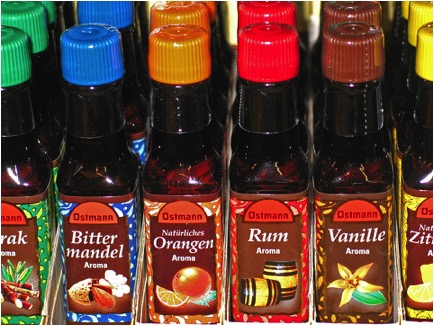Implications of FDA’s Four Flavor Categories on Pharmaceutical Development

What is a “Flavor”? – It depends
As we’ve discussed in the past, to a sensory scientist, the term “flavor” refers to the combination of taste, aroma, mouthfeel and texture.
To a formulator “flavors” are mixtures of aroma chemicals sold as a single ingredient to add aromatic identification to products – orange, chocolate, mint. In addition to aroma chemicals they contain bulking agents (carriers) and other functional ingredients such as preservatives, suspending agents and emulsifiers.
In this post, we will drill deeper into the latter, explaining how these ingredients are separated into four categories depending on their composition, and which ones formulators should choose when developing a drug product.
Flavor Categories
By regulation, flavors are categorized by the Code of Federal Regulations (21CFR101.22) into four types depending on their composition:
- Natural Flavors
- Natural With Other Natural Flavors (WONF)
- Artificial Flavors
- Natural and Artificial (N&A) Flavors
As a formulator, you need to consider the utility and different performance characteristics of each flavor type. We’ll break them down here.
Natural Flavors
The FDA defines a natural flavor as “the essential oil, oleoresin, essence or extractive, protein hydrolysate, distillate, or any product of roasting, heating or enzymolysis, which contains the flavoring constituents derived from a spice, fruit or fruit juice, vegetable or vegetable juice, edible yeast, herb, bark, bud, root, leaf or similar plant material, meat, seafood, poultry, eggs, dairy products, or fermentation products thereof, whose significant function in food is flavoring rather than nutritional.” Interestingly, this is the only time the FDA formally defines the term “natural”; much to the frustration of many in the food industry.
In a natural flavor, the aroma chemicals must be extracted from the source substance (e.g. a natural strawberry must come from a strawberry plant – berry, leaf or stem). The methods of extraction can involve extrusion, solvent extraction, or distillation.
Natural flavors are typically the highest quality (and cost), but as they are derived from natural sources, their composition tends to be both complex and variable. They are also the least stable and are generally not used in drug products.
Natural With Other Natural Flavors
Similar to natural flavors, Natural With Other Natural Flavors (WONF) come from a natural source, but may be blended with other natural flavors (a natural strawberry WONF may contain natural peach flavors, for example). WONF’s can be less prone to variation in flavor characteristics. Due to these blends, they may also have a more unique flavor profile and can be cheaper to produce than their natural counterparts. Natural WONF are generally not used in drug products.
Artificial Flavors
Formally, the FDA classifies artificial flavors by exception, and “any substance, the function of which is to impart flavor” that is not a natural flavor, is an artificial flavor.
In practicality, artificial flavors are mixtures of individual synthesized aroma chemicals, which may be nature-identical. These are combined together in ratios that emulate a natural aroma. Because of increased purity and compositional uniformity, artificial flavors benefit from greater consistency (less batch to batch variation) and decreased impact from raw material changes. Because artificial flavors are assembled from individual chemicals, more reactive species can be omitted from the blend. Thus they tend to withstand greater thermal stress during processing and have a longer shelf-life than their natural counterparts. For these reasons, artificial flavors are commonly used in drug products.
Natural and Artificial Flavors
As the name implies, Natural and Artificial Flavors (N&A) combine natural flavors with artificial flavors, without regard to the mass fraction of either constituent. It is common knowledge in the industry that the composition of N&A flavors is mostly artificial. N&A flavors are generally higher in flavor quality than artificial – though somewhat more variable. They are less expensive than WONF and are commonly used in drug products.
The Role of Flavors in Palatable Drug Products
Flavors generally play a minor role in taste masking, particularly when the challenge is bitterness or trigeminal irritation owing to differences in the physiology of taste, smell and chemesthesis. However, they are useful in masking a malodor from the API (e.g. the sulfurous aromatic of some antibiotics) or excipient (e.g., oxidized oil aromatics of most emulsifiers). Patients’ first perceptions should be from the flavors– smelled when opening the medicine bottle or off the dosing spoon. If on the other hand a malodor is the initial impression then successful dose administration may be imperiled.
Taste Masking Challenge? Senopsys Can Help!
Are you faced with the need to develop a palatable drug product to support clinical trials or commercial development? Our scientists are expert in both taste assessment and taste masking.
We use our experienced GCP-compliant taste panels and analytic tools to quantify the taste masking challenge and guide formulation development. And we apply a structured, sensory-directed development approach pioneered in the food industry to create palatable, taste-masked drug formulations for liquids, powders and solids.

